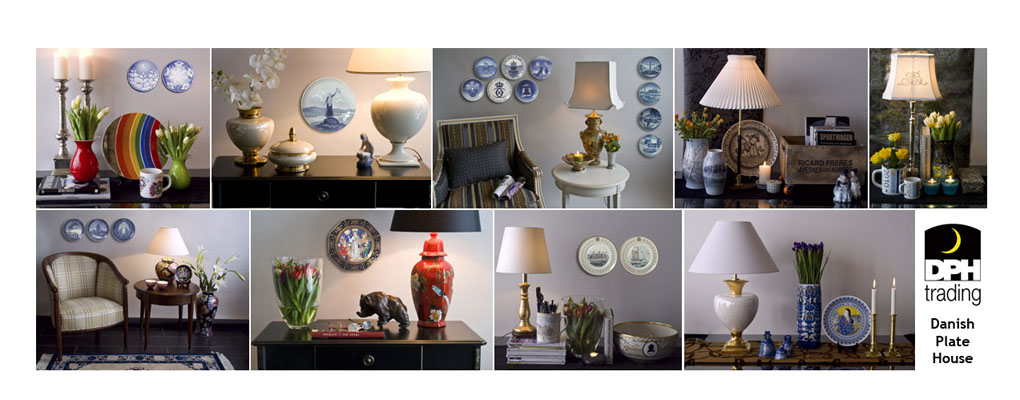I am often asked about the difference between 1st and 2nd quality of Royal Copenhagen and Bing & Grondahl. This has prompted me to write a bit about it.
Basically it is about an evaluation of the porcelain made in the factory after production. The finished porcelain was lookes over to see if they live up to the quality demands of the factory. Those that were deemed 2nd quality, where then sold at a lower price than 1st quality.
Today only dinner service is sold as 2nd quality in factory sales, but the improved technique for burning the porcelain means that all the yearly cllector's items are sold as 1st quality now.
In the past a large part of the production could be of a quality that did not meet the quality demand, which made it necessary to sell it as 2nd quality.
However one must remember that the evaluation was made by people, so the evaluation of the porcelain could vary a lot, meaning that there was great difference in when figurines and plates were judged as 2nd quality. For instance many of the Christmas plates from Royal Copenhagen that were made into 2nd quality are hard to differentiate from 1st quality. You can see many of these for sale at reasonable prices on our page with Royal Copenhagen Christmas plates.
How is 2nd quality marked?
When Royal Copenhagen decided that a porcelain item did not meet the quality demands, it was marked with a scratch through the three waves in the mark of Royal Copenhagen. The scratch was drawn vertically through the waves.
It is as mentioned still possible to buy dinner service in 2nd quality, but Royal Copenhagen stopped selling collector's items in 2nd quality in 1972- Before then you could also buy Royal Copenhagen Christmas plates in 2nd quality. We have many of these in stock and it is thus possible to acquire these years at an affordable price.
Like Royal Copenhagen Bing & Grondahl marked their porcelain with a scratch through the glazing over the company brand. The scratch of Bing & Grondahl was a horizontal line across the three towers in the brand. When the towers were absent the scratch was made across the B&G mark.
Bing & Grondahl sold both dinner service and figurines in second quality, but has never sold annual collector's items in 2nd quality. Thus Bing & Grondahl Christmas plates are in 1st quality.
If a Bing & Grondahl Christmas plate is set as 2nd quality in our stock, then it is due to our internal quality control.
It is 1st quality, if there is no scratch and 2nd quality, if there is a scratch.
Aside from this scratch it can often be difficult to differentiate between 1st and 2nd quality as it is often merely a question of slight discolorations that have led to it being judge as 2nd quality. Because of this the two qualities can often be very much alike, but the 2nd quality mark has great influence on the price.
Porcelain with 2 and 3 scratchs
Some dinner services are marked with both 2 and 3 scratches across the brand. This is not due to it being 3rd quality. The employees of the the porcelain factories could by 2nd quality porcelain for their own use, which was called employee items. These were usually marked with 2 and 3 scratched across the brand.
That means that if you have some porcelain with two or three scratches across the brand, then it is most likely employee items, which is the same as 2nd quality.
I hope that this small newsletter has given you a good explanation about the 1st and 2nd quality of Royal Copenhagen and Bing & Grondahl porcelain.

What about the quality, or variation in the depth or darkness of the blue glaze?
ReplyDelete